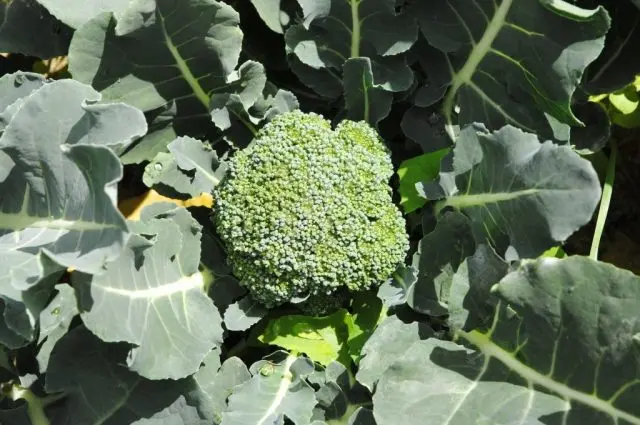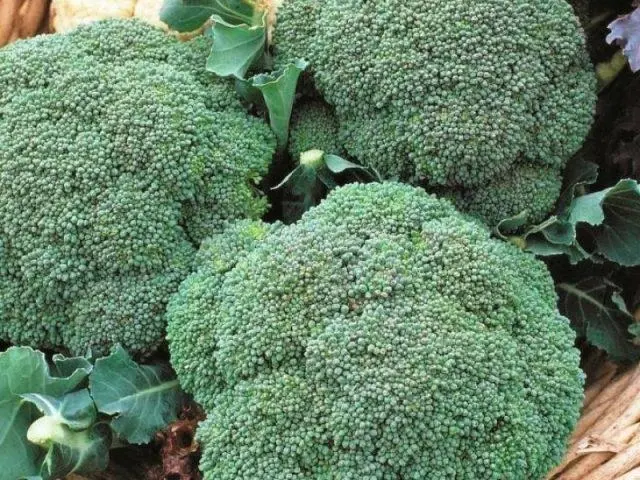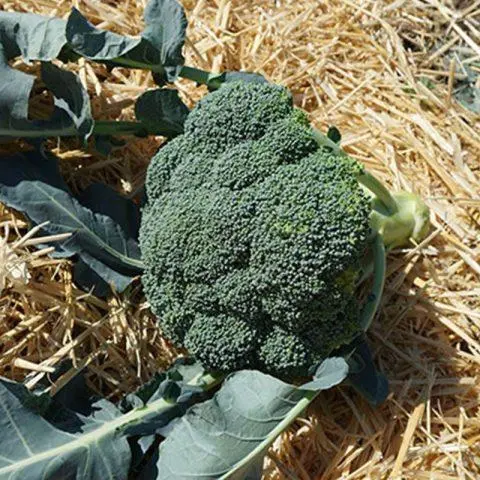Contents
Growing broccoli in Siberia is possible if you follow the planting dates, as well as choose the right varieties. For open ground, it is necessary to choose the most resistant varieties. In the greenhouse, you can grow different plants, but it is best to stop at early and mid-season.
Is it possible to grow broccoli in Siberia
Broccoli is allowed to grow in Siberia, and not only early, but also medium, as well as late varieties. When choosing a crop, you should pay attention to resistance to temperature extremes and droughts.
Most often, hybrids are chosen for cultivation, since they are most adapted even to adverse climatic conditions. It is quite possible to grow them in open ground conditions.
The choice of a particular variety is carried out according to several criteria:
- ripening dates;
- productivity;
- taste qualities;
- presentation (if grown for sale);
- Is the variety suitable for freezing?
The best varieties of broccoli for Siberia
Far from all varieties of broccoli grow well in Siberia. For cultivation, it is necessary to choose varieties that are most resistant to temperature extremes and drought. As a rule, these are hybrids, although there are quite suitable varietal varieties. The main representatives are described in the following sections.
For open ground
In Siberia, broccoli is allowed to be cultivated both in a greenhouse and in open beds. But for this you need to choose hybrids and varieties that are most resistant to adverse climatic conditions. It is recommended to consider the following varieties:
- Lazar F1.
- Tone.
- The Emperor
Hybrid Lazar yields a crop in just 60 days after the germination of seedlings of seedlings. Therefore, it is considered one of the most precocious representatives of broccoli. Heads are dense and large, suitable for freezing.
Tonus is another type of cabbage that can be grown in the climatic conditions of Siberia. Gives a harvest in 70-90 days from germination. Dates largely depend on care and weather conditions. The central inflorescences are small, weighing 200 g. A week after they are harvested, the lateral ones begin to develop, they can be up to 70 g.
The heads have a rich dark green color, and if it is too cold outside, they turn brown. Ripening is not only fast, but also friendly, which facilitates harvesting. If the weather is relatively warm and the care is good, heads of cabbage are formed even in the second half of September.
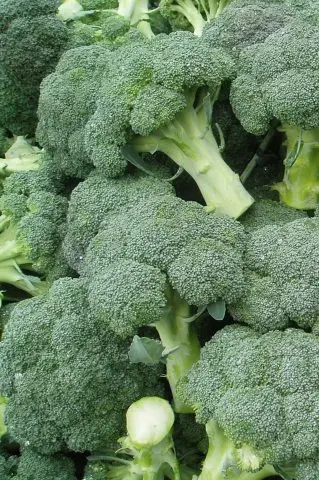
Variety Tonus yields three months from the start of seedling growth
Another representative of broccoli for Siberia is the Emperor. It is distinguished by an unusual shape of leaves (in the form of a cone or fir-trees), the color is dark green. The heads ripen within 80-85 days, reach a mass of 400 g. The bunches grow in a spiral, so the inflorescence shape is obtained in the form of an emperor’s “palace”. At the same time, the yield is small – within 1 kg from 1 m2.
For greenhouse
If we consider varieties of broccoli for Siberia with a large head, which are intended for growing in a greenhouse, you can choose among the following varieties:
- Continental.
- Monterey.
Broccoli Continental is suitable for Siberia because it is unpretentious. Produces semi-raised rosettes with small leaves. The color is rich green, with dark shades. The heads are rounded, rather dense, open type.
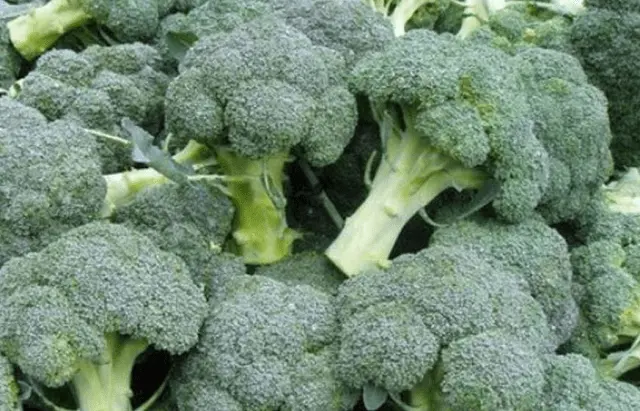
The mass of one inflorescence reaches 500-600 g
The taste is very good, the yield is satisfactory – more than 2 kg per 1 m2.
Monterey is another broccoli variety for Siberia. Gives small oval heads, somewhat flattened, gray-green in color. The leaves are small, slightly wavy at the edges. The heads can be either medium (600-700 g) or very large (up to 1,9 kg). The taste is very good, the yield reaches 3,6 kg per 1 m2.
Early
Early varieties of broccoli ripen in just 70-80 days from the date when the seedlings appear. For cultivation in Siberia, the following varieties are optimally suited:
- Green Magic F1.

- Fiesta F1.

- Naxos F1.

Hybrid Green Magic F1 bears fruit in just 60-70 days. It adapts well to different conditions, undemanding to the soil. Heads keep their shape even in hot weather. It has a rich dark green color. Inflorescences are attractive, dome-shaped. The stumps are dense, they do not have voids. On average, a head of this broccoli variety weighs 500-700 g. The taste is excellent, the inflorescences are consumed both fresh and frozen. The resistance of the variety for Siberia to powdery mildew is noted. The yield reaches 3,5 kg per square meter.
Another early ripe hybrid is Fiesta F1. This broccoli is suitable for cultivation in Siberia. Gives a harvest in just 80 days. On average, the fruits weigh 400-500 g. The inflorescences are green, the leaves have a slight wax coating. The hybrid is quite resistant to temperature extremes, rain, winds.
The heads are small, usually oval in shape, may have a slight flattening, small tubercles. They have an attractive presentation. Therefore, you can cultivate both for yourself and for subsequent implementation.
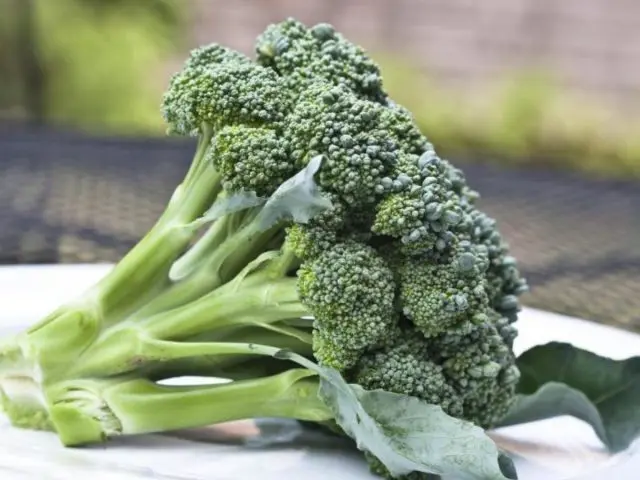
Fiesta grows well in cool conditions
Also, such a broccoli hybrid as Naxos F1 is suitable for growing in Siberia. This culture originated in Japan. Refers to early ripe varieties, ripens in 75-80 days. Fruits of average weight from 400 to 600 g. Suitable only for fresh consumption.
The leaves are large, blue-green in color, have a wax coating. The edges are slightly wavy, slightly bubbled, the petioles are small. Medium sized heads. The shape is oval, with a slight flattening. Color blue-green. The heads are quite dense, covering sheets are absent.
The middle-ripening
Mid-season varieties of broccoli for Siberia ripen in 80-100 days. Experienced gardeners recommend choosing the following hybrids and varieties:
- Batavia F1.
- Heraklion F1.
- Ironman F1.
- Lightweight F1.
- Linda.
Batavia F1 is a broccoli hybrid for Siberia. Gives large heads weighing 1-1,5 kg. Inflorescences can be easily separated, they can be consumed fresh, as well as frozen. The maturation period is short and is only 90-95 days.
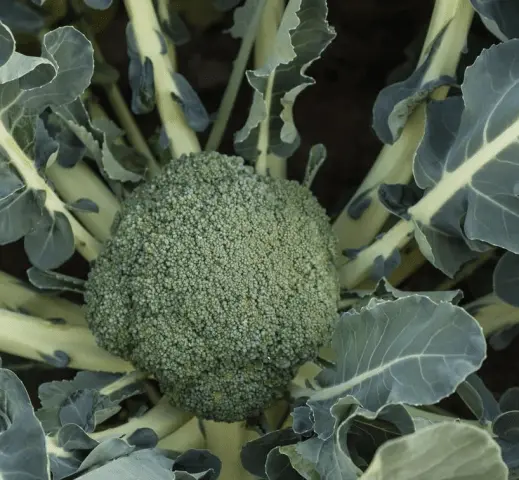
Hybrid Batavia F1 resistant to cool conditions
It bears fruit until the first frost (after cutting the main inflorescence, lateral shoots appear). Tolerates drought well. You can grow a crop as seedlings or direct sowing in the ground.
Another variety of broccoli for Siberia is the Heraklion hybrid. It has very good drought tolerance. It is not picky about the composition of the soil – it gives a good harvest even on depleted soils. The crop is formed in 70-80 days, so the hybrid can be classified as medium early.
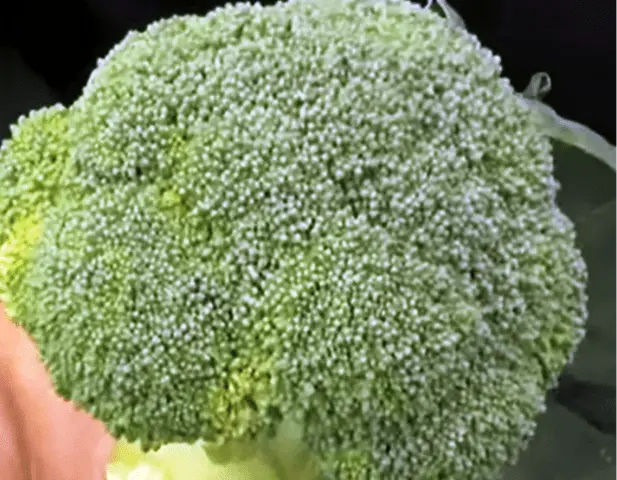
The mass of one inflorescence is 400-600 g
The heads have an attractive appearance, have a rich green color. The inflorescences are well defined and easily separated, so they can be used for freezing.
Ironman F1 is another suitable broccoli hybrid for the Siberian climate. Belongs to the group of medium-early – the harvest appears in the period of 85-110 days, depending on the weather and the rules of care. Plants produce vertical or raised rosettes with leaves. The color is blue-green, the edges are wavy. The heads are domed, medium in size, grayish-green in color. The mass is usually about 400 g, but reaches 600 g. It has a very good taste. Apply fresh and frozen. Productivity up to 3,7 kg per square meter.
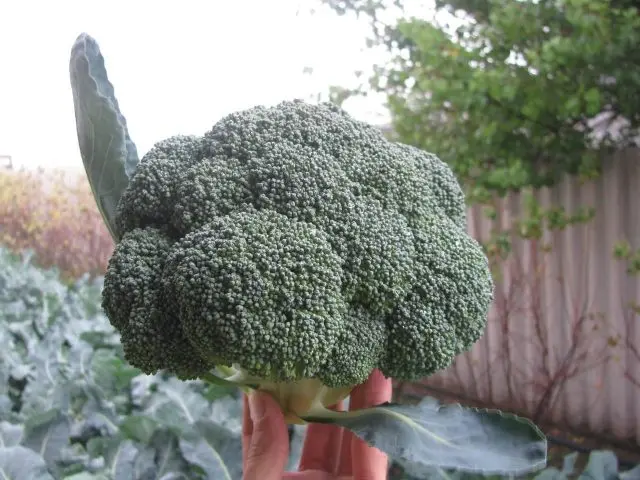
Ironman is one of the most productive varieties
The culture needs good moisture. It is equally important to regularly loosen the soil and weed.
The broccoli hybrid Lucky can also be grown in Siberia. This is a mid-early variety, yielding a crop 100 days after germination. The leaves are raised, have a gray-green color and a waxy coating. Heads of medium size, rounded flat, dense structure, dark green color.
On average, inflorescences weigh 300-600 g. They are quite compact and even, so they look attractive. The hybrid can be grown both in personal farms and for commercial purposes. Plants are demanding on the level of soil fertility. They grow well on loose soils with a neutral reaction.
Another medium-ripening broccoli variety suitable for Siberia is Linda. Ripens in 85-90 days, gives a high yield of up to 4 kg per square meter. This is provided both by the main inflorescences weighing 300-400 g, and by lateral shoots. Rosettes of leaves rise, the foliage itself is elliptical, small. It has a gray-green hue and a bubbly surface with a slight coating. The heads are rounded, small in size, medium density, covering leaves are absent. The surface is moderately bumpy, the shade is dark green.
Late
Late-ripening crops give a harvest in 110-130 days. For Siberia, such representatives of broccoli are suitable:
- Parthenon F1.

- Marathon F1.

Parthenon is a hybrid that yields 120-130 days after germination. Therefore, the collection usually falls in September. The culture develops well in cool conditions (temperature 15-18 degrees). Productivity is high, reaches 3,3 kg per 1 m2.
Marathon F1 is another type of broccoli for Siberia. It ripens in 100-110 days, so you can always have time to harvest. Gives dense and large inflorescences weighing up to 1 kg. The surface is smooth. Lateral shoots are also large – often up to 150 g.
It adapts well to different climatic conditions. Consume fresh and frozen. It has a very high yield – from 1 m2 you can collect from 5 to 7 kg (planting density – up to 6 bushes).
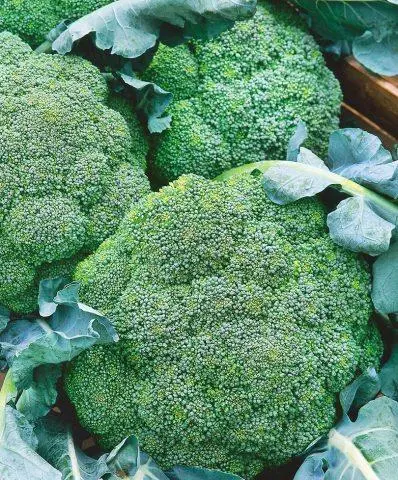
Marathon brings up to 7 kg of inflorescences from each square meter
Features of growing broccoli in Siberia
Almost always, broccoli is grown in seedlings in Siberian conditions. They start sowing seeds from mid-March to the first decade of April in order to transplant seedlings into a greenhouse or into the ground in the first half of May. The main stages and rules of cultivation are described below.
Growing seedlings
Seedlings of seedlings are sown in shallow and wide boxes, having previously laid fertile soil. Moisturize, cover with a film and put on the windowsill. Be sure to install phytolamps so that the length of the daylight hours is at least 14 hours.
After germination, the film is removed and broccoli seedlings are grown already at +10. Then, after the formation of 2-3 sheets, they dive and gradually increase the temperature to +15. In Siberia, such conditions can be provided on a closed balcony or loggia.
Landing in open ground
In open ground, grown broccoli seedlings are transplanted 25-35 days after germination. As a rule, this time falls on the May holidays. Plants are unpretentious, develop normally at a temperature of 18-20 degrees. But if frosts are expected on the soil, it is better to wait and transplant in the second half of May.
Before transplanting, the soil is fertilized and several holes are marked at a distance of 40 cm (at least 50 cm between rows). It is best to plant in a checkerboard pattern to ensure even coverage.
Conclusion
Growing broccoli in Siberia is quite possible, both in the greenhouse and in the open field. For planting, choose both early and mid-season and even late varieties. To ensure good yields, maintain a constant level of soil moisture, periodically make top dressing.










